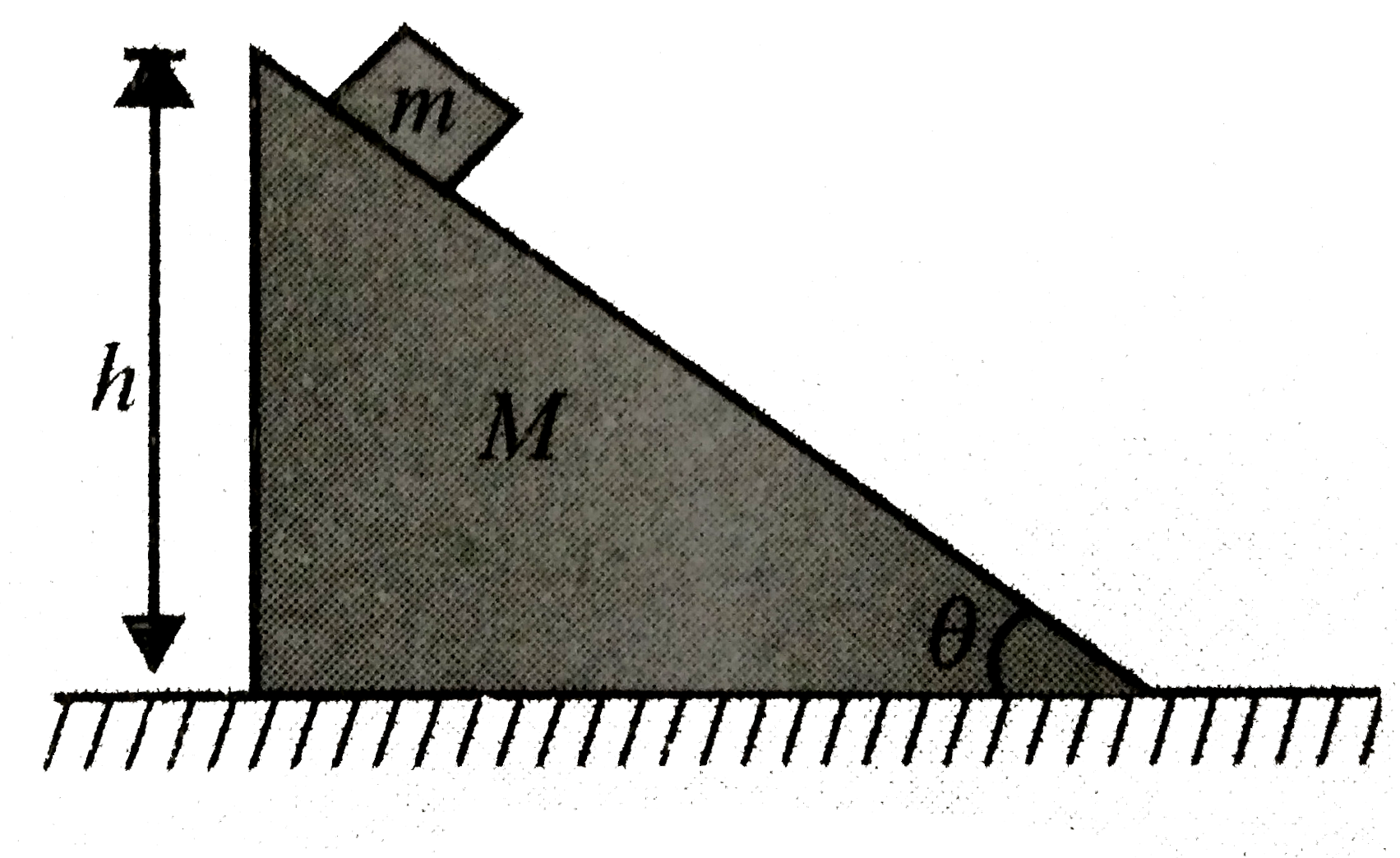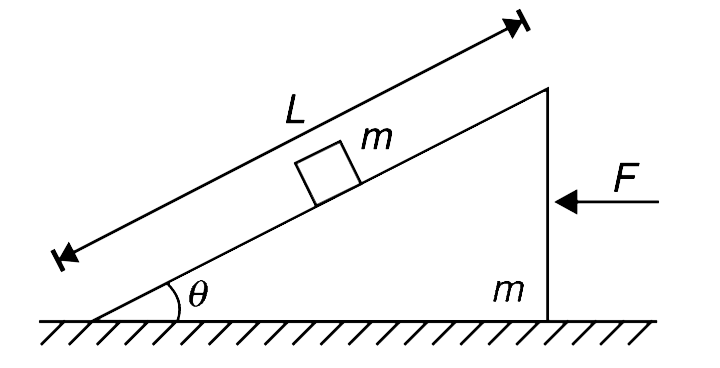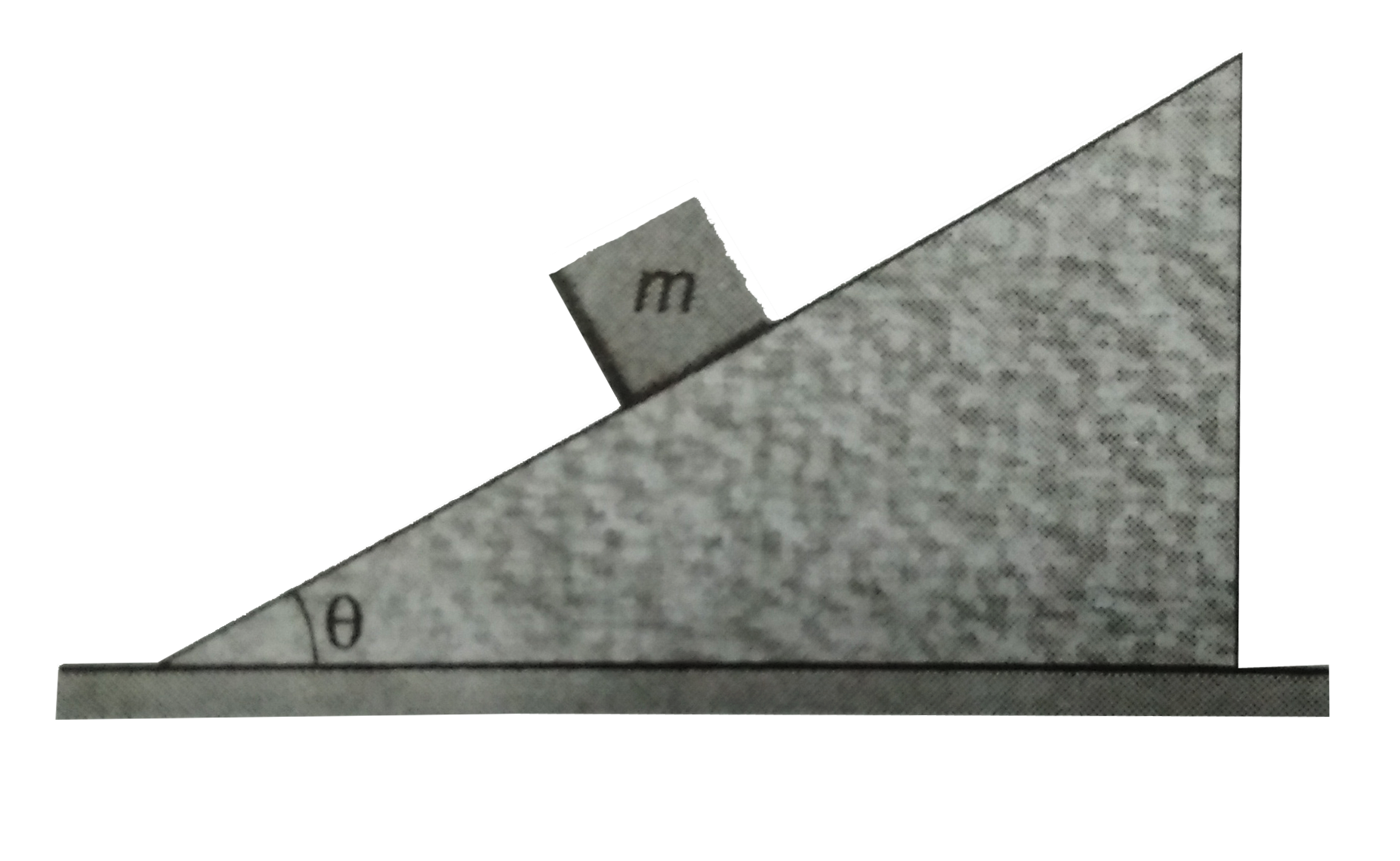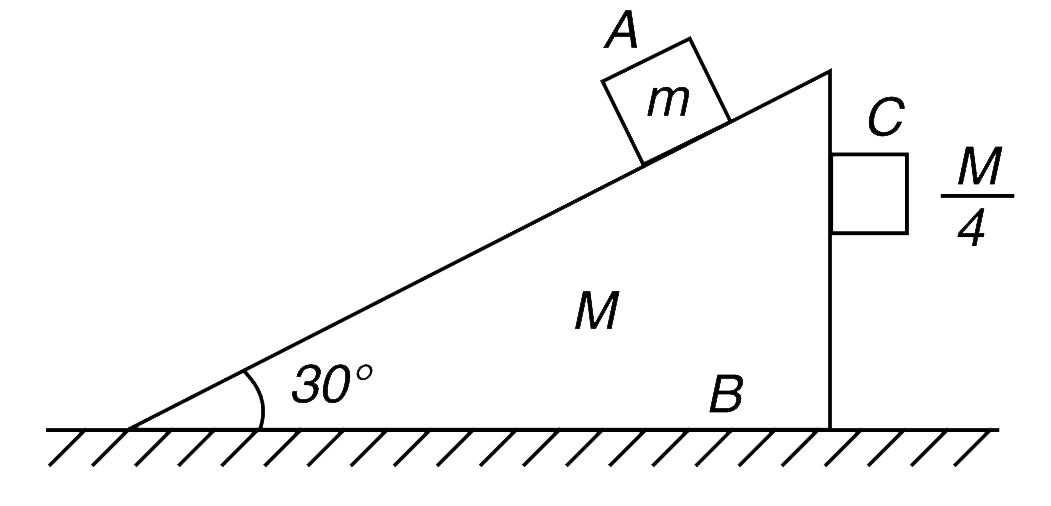A wedge of mass m2 is kept on a spring balance. A small block of mass m1 can move along the frictionless incline of the wedge. What is the reading of the balance while the block slides? Ignore the recoil of the wedge.

We consider wedge and block as our system. friction reaction force between block and wedge is internal force. NxandNy represent reactions on the wedge by the balance.
 From Newton's second law, for system block and wedge.
From Newton's second law, for system block and wedge.
NY−(m1g+m2g)=(m1+m2)(aCM)y ...................i
(aCM)y=m1a1y+m2a2ym1+m2=m1(−gsin2θ)+0m1+m2.............ii
Note that the block has acceleration of magnitude gsinθ along an incline y-component of this acceleration is gsin2θ. from eqn i and iii
NY=(m1g+m2)g+(m1+m2)(aCM)y
=(m1+m2)g+(m1+m2)(−m1gsin2θm1+m2)
=(m1+m2)g−m1gsin2θ)
Topper's Solved these Questions
- BOOK - CENGAGE PHYSICSCHAPTER - CENTRE OF MASSEXERCISE - Exercise 1.120videos
CENTRE OF MASS
- BOOK - CENGAGE PHYSICSCHAPTER - CENTRE OF MASSEXERCISE - Exercise 1.223videos
CENTRE OF MASS
- BOOK - CENGAGE PHYSICSCHAPTER - CENTRE OF MASSEXERCISE - INTEGER_TYPE1videos
CENTRE OF MASS
- BOOK - CENGAGE PHYSICSCHAPTER - CALORIMETRYEXERCISE - Solved Example13videos
CALORIMETRY
- BOOK - CENGAGE PHYSICSCHAPTER - DIMENSIONS & MEASUREMENTEXERCISE - Integer2videos
DIMENSIONS & MEASUREMENT
Similar Questions
A block of mass m is initially lying on a wedge of mass M with an angle of inclination θ as shown in figure. Calculate the displacement of the wedge when the block is released and reaches to the bottom of the wedge.
 View Solution
View SolutionA wedge of mass M makes an angle θ with the horizontal. The wedge is placed on horizontal frictionless surface. A small block of mass m is placed on the inclined surface of wedge. What horizontal force F must be applied to the wedge so that the force of friction between the block and wedge is zero ?
View Solution
Knowledge Check
- Question 1 - Select One
_2019_CBT4_E01_069_Q01.png)
A wedge of mass 4m is initially at rest on frictionles horizotnal surface. A small block of mass m moving with speed v0 and climbs on wedge. Find maximum height achieved by blockA5v202gB25v20gCv202gD2v20g - Question 2 - Select One
A wooden wedge of mass M and inclination anlgle(α) rest on a smooth floor. A block of mass m is kept on wedge.A force F is applied on the wedge as shown in the figure such that block remains stationary with respect to wedge So, magnitude of froce F is
 A(M+m)g tan αBg tan αCmg cos αD(M+m)g cosec α
A(M+m)g tan αBg tan αCmg cos αD(M+m)g cosec α - Question 3 - Select One
A block of mass m is kept on an inclined plane of mass 2m and inclination α to horizontal. If the whole system is accelerated such that the block does not slip on the wedge then :
AThe normal reaction acting on 2m due to m is mgsecθBFor the block m to remain at rest with respect to wedge a force F=3mgtanα must be applied on 2mCThe normal reaction acting on 2m due to m is mgsecθDPseudo force acting on m with respect to ground is mgtanα towards west.
A wedge of mass m is placed on a horizontal smooth table. A block of mass m is placed at the mid point of the smooth inclined surface having length L along its line of greatest slope. Inclination of the inclined surface is θ=45∘. The block is released and simultaneously a constant horizontal force F is applied on the wedge as shown.
(a) What is value of F if the block does not slide on the wedge?
(b) In how much time the block will come out of the incline surface if applied force is 1.5 times that found in part (a)
 View Solution
View SolutionA wedge of mass m1and a block of mass m2are in equlibrium as shown. Inclined surface of the wedge has an inclination α with the horizontal. Each surface is frictionless. The noram reaction on the wedge may be -
 View Solution
View SolutionA block of mass m is at rest on a rought wedge as shown in figure. What is the force exerted by the wedge on the block?
 View Solution
View SolutionIn the arrangement shown in figure, a block A of mass m has been placed on a smooth wedge B of mass M. The wedge lies on a horizontal smooth surface. Another block C of mass M4 has been placed in contact with the wedge B as shown. The coefficient of friction between the block C and the vertical wedge wall is μ=34. Find the ratio mM for which the block C will not slide with respect to the wedge after the system is released?
 View Solution
View SolutionA particle of mass m is released from rest from a point A of a wedge of mass 4m free to slide on a frictionless horizontal plane. The particle slides down the smooth face AB of the wedge. When the velocity of the wedge is 0.2 m/s the velocity of the particle in m/s relative to the wedge is
View Solution

